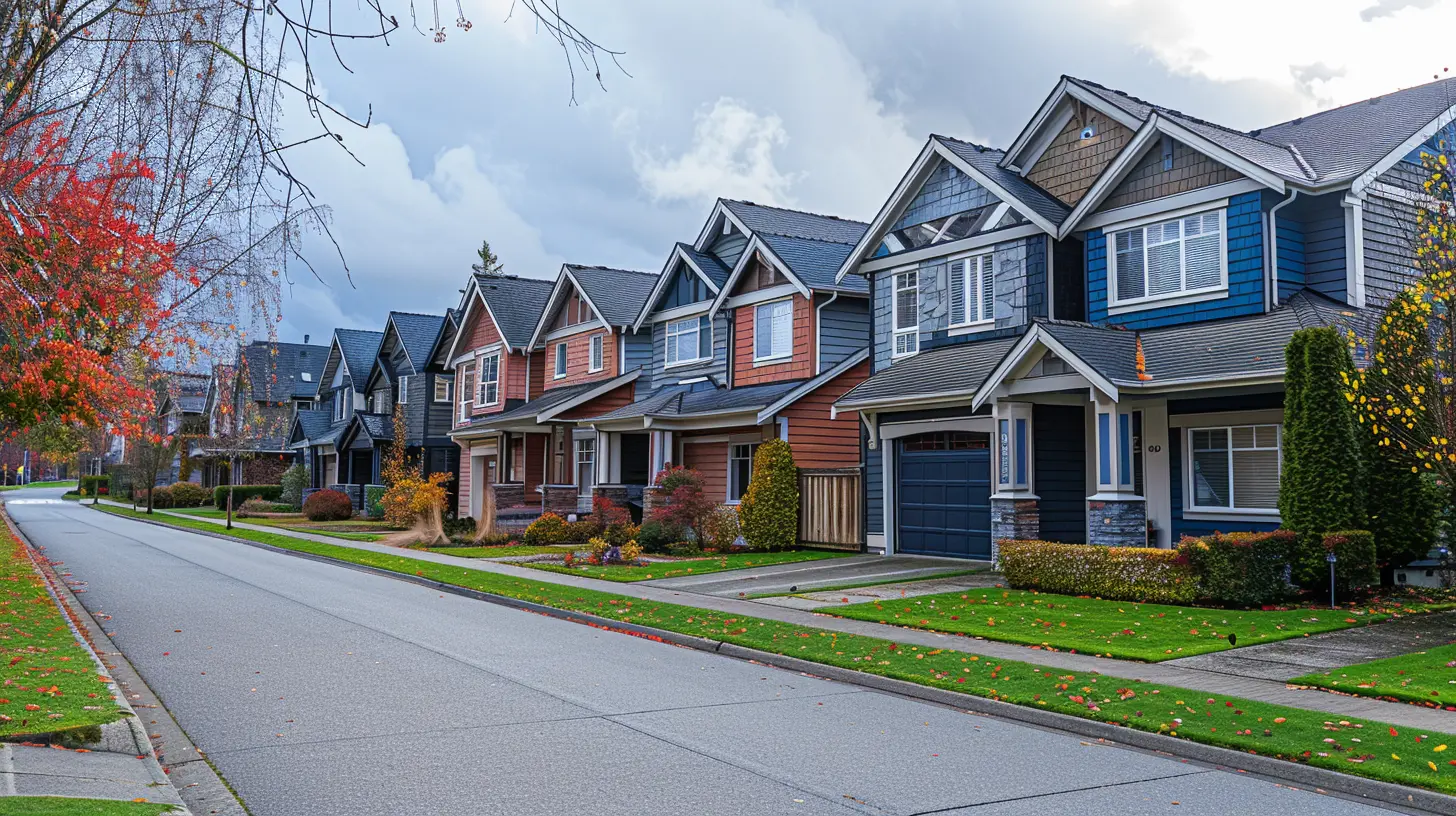Rental Markets: Key Indicators to Watch Before Investing
9 July 2025
Investing in rental properties can be a goldmine or a money pit—it all depends on timing, location, and, most importantly, knowing what to look for. Sure, everyone loves the idea of passive income, right? But before you dive headfirst into buying your first (or fifth) rental property, you need to understand the key indicators that will make or break your investment.
Whether you're a seasoned investor or just starting out, recognizing the right signals in the rental market is like having a treasure map—follow it, and you increase your chances of hitting the jackpot.
So grab a coffee, sit back, and let’s break down the rental market indicators you can’t afford to ignore.
1. Rental Yield: What’s Your ROI Really Saying?
First things first—how much bang are you getting for your buck?Rental yield is the percentage of return you get from renting out a property based on its value. It’s one of the clearest snapshots of an investment’s profitability.
✅ How to Calculate Rental Yield:
Take the annual rental income, divide it by the property’s purchase price, and multiply by 100. That’s your gross rental yield.Formula:
`(Annual Rent / Property Price) x 100 = Gross Yield %`
For example, if a property costs $300,000 and generates $24,000 a year in rent, that’s an 8% gross yield.
Not too shabby, right?
But here’s where it gets real: gross yields don’t include expenses. Property taxes, maintenance, vacancies, and management fees? They eat into your profits. That’s why savvy investors also look at net rental yield—it gives you a more realistic view.
2. Vacancy Rates: Supply vs. Demand at a Glance
Ever had a party where nobody showed up? That’s what owning a property with a high vacancy rate feels like. The vacancy rate tells you how many rental properties in a specific area are sitting empty.🎯 Why It Matters:
High vacancy = low demand or too much supply.Low vacancy = strong demand and potentially higher rental income.
Pro tip: Look for areas with vacancy rates under 5%. That’s a healthy sign the market is tight, and renters are actively searching for places to live.
When renters are fighting over leases, landlords win.
3. Rent Price Trends: Are Prices Climbing or Crashing?
Track rent prices in the area for at least the past five years. Is there steady growth, or are prices stagnant?📈 Here’s the Deal:
If rent prices are climbing each year, that’s a strong demand signal. On the flip side, if rents are dropping or have plateaued, scratch your head and ask, “Why?”Maybe there’s overdevelopment. Maybe jobs are scarce. Or maybe, just maybe, it’s not the golden goose market it once was.
Use online platforms like Zillow, RentCafe, and local housing reports to monitor rent trends in your target areas.
4. Population Growth: Where the People Go, Money Flows
People don’t just move for fun—they move for jobs, amenities, schools, and lifestyle. Tracking where population is increasing gives you a clear hint as to where housing (and rental) demand will surge.📊 Population Growth Signals:
- Urban areas expanding into suburbs.- Migration into certain states or cities due to tax incentives or job growth.
- Growing young adult population (hello, Millennials and Gen Z renters).
A growing population typically means a growing rental market. Think of it like a snowball effect—more people = more renters = higher demand = increased rents = more profit in your pocket.
5. Job Market & Economic Stability: Jobs Drive Rents
Let’s face it—no job, no rent. Areas with strong employment growth typically see stronger rental demand.🧠 What to Watch:
- Low unemployment rate- Presence of diverse industries (you don’t want a one-horse town)
- Big companies opening new offices or factories nearby
Cities like Austin, Nashville, or Raleigh didn’t just boom by accident. Tech, healthcare, and finance came in, jobs flooded the market, and rental demand skyrocketed.
Invest where people are working. Simple math.
6. Affordability Ratio: How Much Are Renters Spending?
The affordability ratio compares rent prices to average household income. Ideally, renters should spend no more than 30% of their income on housing.So, what happens when rents rise faster than incomes? You get high tenant turnover, late payments, or difficulty finding quality renters. None of which you want.
👀 Pro Move:
Check the median household income for your target area and compare it to average rent. If renters are already stretched thin, think twice before investing.7. Local Legislation: Friendly or Frightening for Landlords?
Some cities are landlord-friendly. Others? Not so much.Rent control, strict tenant laws, or costly permitting processes can make a seemingly good deal turn sour fast.
⚖️ Dig Into:
- Rent control laws- Eviction policies
- Property tax regulations
- Short-term rental restrictions (airbnb laws)
Always consult a local real estate attorney or property manager before buying into a new market. It’s better to be safe than sorry—or sued.
8. Infrastructure & Development Plans: Is the Area Evolving?
Is that sleepy neighborhood getting a light rail station next year? Is a Whole Foods moving in down the street? These signs scream "up-and-coming."Municipal plans can tell you a lot about where an area is headed.
🔍 Where to Look:
- City planning websites- Zoning changes
- New housing developments
- Road expansions or transit upgrades
If you can get in before the boom, that’s where the real money’s made. Think about it—wouldn’t you love to say, “I bought here before it was cool”?
9. Property Taxes: The Silent Profit Killer
High property taxes can eat away at your rental profits faster than you’d think.💸 Things to Know:
- Property taxes vary wildly by state and even by county.- Some areas reassess property values annually (and increase taxes).
- Compare taxes on similar properties nearby.
One investor might make $2,000 more a year just by choosing a county 15 miles away with lower taxes. Imagine the snowball effect over 10 years.
10. Neighborhood Quality and Ratings: The Human Element
Let’s not forget—renters are people. They want safety, good schools, nice parks, decent transport, and places to grab a cup of coffee or brunch on Sundays.🏡 Consider:
- Crime rates- Public school ratings
- Walkability and public transport
- Local amenities (gyms, cafes, parks)
Use Google Maps creatively—drive around virtually. Check Yelp for local businesses. Even read online reviews of neighborhoods. It sounds odd, but it works!
Happy tenants stay longer. And long-term tenants = stable income.
11. Seasonality in the Rental Market
Not all months are created equal. The rental market has a rhythm, and timing your purchase or listing can play a big role in profits.🕰️ Rule of Thumb:
- Summer = High rental demand. Families move, students relocate.- Winter = Low activity. Fewer people want to move in the snow.
If you're buying, consider closing a deal in winter (when prices are often lower), and renting out in spring or summer for top dollar.
12. Comparables and Market Saturation: Too Many Units?
Say you choose a booming suburb. Perfect rents, great jobs, low vacancy. But there’s just one problem—everyone else had the same idea. And now, the market's flooded.🔎 Do Your Homework:
- Check how many rental listings are active- Look at new apartment projects under construction
- Talk to local property managers
An oversaturated market = price competition. Which means lower rents and potential vacancies. Don’t be the last one to the party.
13. Tenant Demographics: Know Your Audience
Just like a good business knows their customer, a smart landlord knows their tenant.👤 Ask Yourself:
- Are my tenants students, families, young professionals, retirees?- Will this property appeal to them?
- Do the amenities align with their lifestyle?
Buy with your target renter in mind. If you're near a university, small and affordable units make sense. In a family suburb? Think 3-bedroom homes with yards.
Final Thoughts: It’s About the Big Picture
No single indicator works in isolation. Think of these as jigsaw puzzle pieces—they all need to fit together to show you the full picture.Ask yourself:
- Is demand rising?
- Can I cashflow day one?
- What’s my risk if the market shifts?
It’s not about guessing markets. It’s about recognizing patterns.
Do the work upfront, and your rental property won’t just be an investment—it’ll be a wealth-building machine.
all images in this post were generated using AI tools
Category:
Market AnalysisAuthor:

Camila King
Discussion
rate this article
2 comments
Storm Whitley
Know the indicators, or risk becoming a tenant yourself!
November 18, 2025 at 3:52 AM

Camila King
Absolutely! Understanding these indicators is crucial for making informed investment decisions and avoiding pitfalls in the rental market.
Carla Pace
Great insights! Understanding rental market indicators is crucial for making informed investment decisions. The nuances you’ve highlighted can truly empower potential investors to navigate the market with confidence and compassion for tenants’ needs. Thank you!
July 14, 2025 at 8:22 PM

Camila King
Thank you for your thoughtful comment! I'm glad you found the insights valuable for navigating the rental market. Happy investing!


